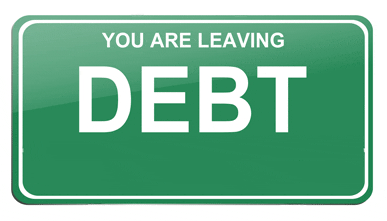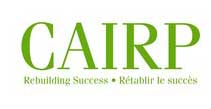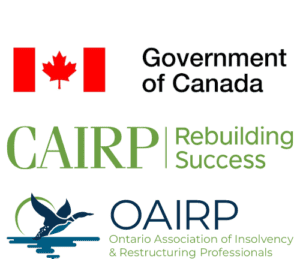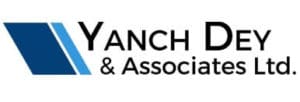Many people think CRA tax debt cannot be reduced, but that is one of the biggest myths.
 A consumer proposal is one of the only legal ways in Canada to cut your tax debt, stop interest, and create a single affordable payment. CRA accepts proposals because they return more money than bankruptcy, and because the process is fully regulated by the federal government.
A consumer proposal is one of the only legal ways in Canada to cut your tax debt, stop interest, and create a single affordable payment. CRA accepts proposals because they return more money than bankruptcy, and because the process is fully regulated by the federal government.
You can include several types of CRA balances in one proposal, such as:
- personal income tax
- HST/GST owing as a sole proprietor
- penalties from late filing
- compounded daily interest
- multiple years of taxes once those returns are filed
A proposal brings everything together into one clear, manageable solution, even if the debt has been growing for years.
Why CRA Accepts Consumer Proposals
CRA is strict with collections, but they are surprisingly practical when it comes to proposals.
They usually accept proposals because they receive more than they would in a bankruptcy, and because proposals allow them to recover funds in a controlled, predictable way. CRA often supports proposals when the offer:
- provides steady monthly payments
- reflects your real income and budget
- returns a higher recovery than bankruptcy
- follows CRA repayment guidelines
- is structured by a Licensed Insolvency Trustee
This balanced approach is why consumer proposals have such a high approval rate with CRA.
What CRA Stops Doing Once the Proposal Is Filed
A consumer proposal gives you immediate legal protection called a stay of proceedings, and this protection applies to CRA. Once your trustee files your proposal, CRA must stop all collection actions. This includes:
- wage garnishments
- frozen bank accounts
- collection calls or letters
- interest and penalties
- legal actions or court processes
The stay is powerful because it prevents CRA from taking any further action while you reorganize your finances through the proposal.
How Much CRA Will Accept in a Proposal
CRA accepts realistic settlement amounts based on your income, household expenses, and what they would receive in a bankruptcy. Most people end up paying about 30% of their tax debt, spread out over three to five years, with no interest added. CRA focuses on:
- your ability to pay
- your future earning potential
- the fairness of the offer
- the comparison to bankruptcy
Because the proposal removes interest and penalties, the total cost becomes far more manageable than trying to pay the full balance.
Do I Need to File Outstanding Tax Returns First?
Yes. CRA requires that all missing tax returns be filed before they vote on your proposal. This ensures everyone is working with accurate numbers.
The trustee helps you:
- gather your documents
- prepare and file outstanding returns
- calculate your true debt
- communicate the updated balance to CRA
Once everything is filed, CRA can properly review your offer and decide on approval.
Can CRA Reject a Proposal?
They can, but it’s uncommon. CRA may request adjustments if the offer is too low or if your income suggests a higher payment is reasonable.
Even then, the change is often small — such as adding a few dollars per month or extending the proposal length. Trustees understand CRA’s internal guidelines, so they build a proposal that already aligns with what CRA typically accepts. This is why rejection is rare and most proposals pass on the first vote.
What CRA Debt Cannot Be Included?
Almost all CRA balances can be included in your proposal. The main exceptions are:
- secured tax debts (very rare)
- debts involving fraud or criminal activity
Everything else — tax, interest, penalties, and HST — is treated as standard unsecured debt and can be fully included.
How a CRA Proposal Helps You Recover Financially
CRA interest can grow quickly and make the debt feel impossible to manage. A consumer proposal gives you breathing room by:
- freezing all future interest
- reducing the total amount owed
- stopping collections immediately
- protecting your wages and bank account
- giving you one fixed monthly payment
This stability allows you to rebuild your finances, make a realistic plan, and avoid the overwhelming pressure that CRA collections can create.


 A consumer proposal is one of the only legal ways in Canada to cut your tax debt, stop interest, and create a single affordable payment. CRA accepts proposals because they return more money than bankruptcy, and because the process is fully regulated by the federal government.
A consumer proposal is one of the only legal ways in Canada to cut your tax debt, stop interest, and create a single affordable payment. CRA accepts proposals because they return more money than bankruptcy, and because the process is fully regulated by the federal government.







